Note: This is part two of a series on the Navaho Missile. Part one can be viewed at The Navaho Missile: Part 1.
As Phase 1 testing of the X-10 Program came to an end, the flight test portion for Phase 2 began to ramp up at the Air Force Missile Test Center at Cape Canaveral, 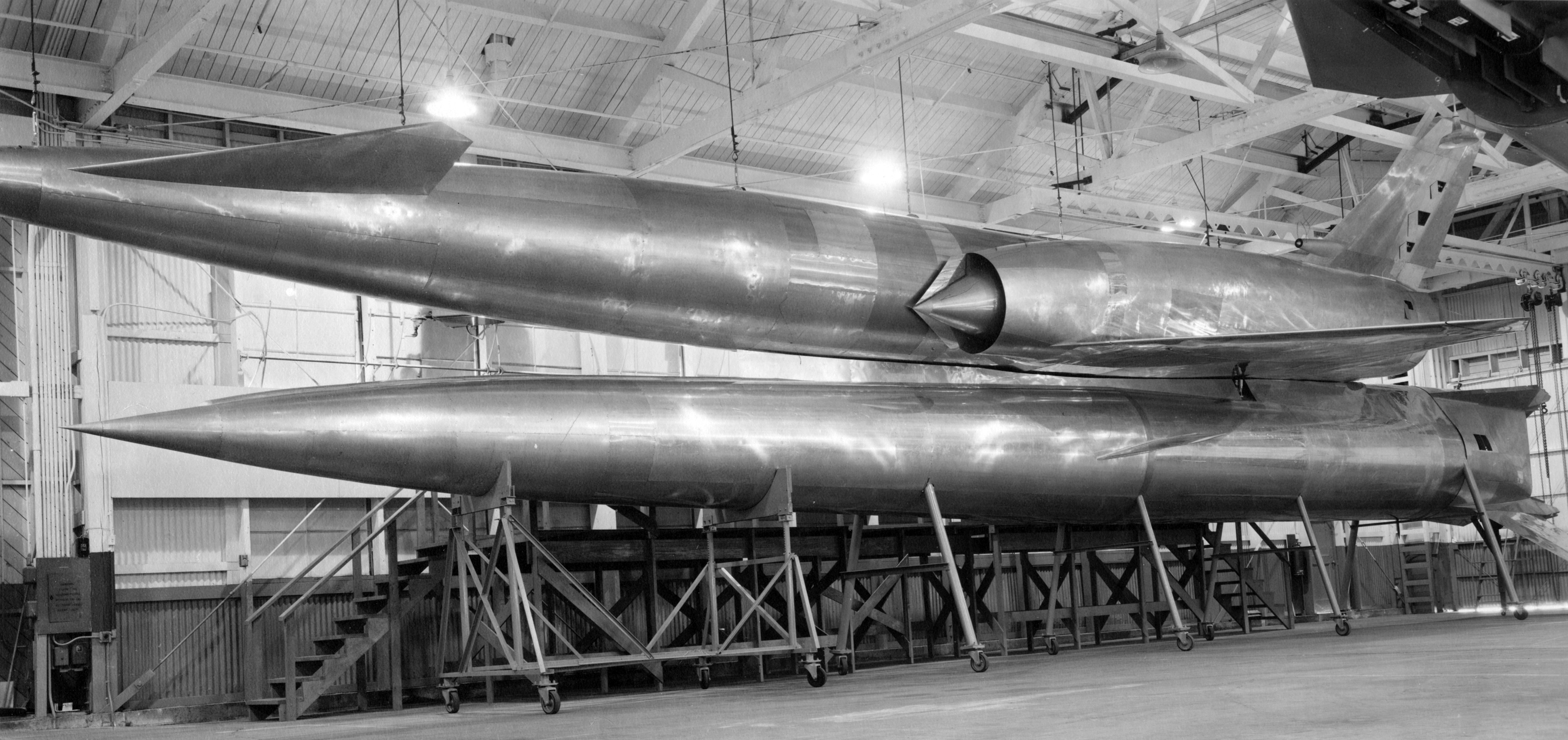 Florida. From the beginning, North American Aviation (NAA) designed the vertically launched Navaho II- XSM-64 as a rocket-boosted, ramjet-powered missile, two-third scale, intermediate range cruise missile testbed for the operational XSM-64A intercontinental missile. For XSM-64 testing, NAA engineers needed to launch the missile to a speed exceeding Mach 3 by the use of a liquid-fueled rocket booster powered by two Rocketdyne XLR71-NA-1 engines capable of achieving 249,000 pounds of thrust. At speed and altitude the missile separated from its booster and the two Wright Aeronautical XRJ47-W-5 ramjets powering the XSM-64 took over and the missile performed its intended mission. NAA designed the XSM-64A operational missile system to be powered by even more powerful
Florida. From the beginning, North American Aviation (NAA) designed the vertically launched Navaho II- XSM-64 as a rocket-boosted, ramjet-powered missile, two-third scale, intermediate range cruise missile testbed for the operational XSM-64A intercontinental missile. For XSM-64 testing, NAA engineers needed to launch the missile to a speed exceeding Mach 3 by the use of a liquid-fueled rocket booster powered by two Rocketdyne XLR71-NA-1 engines capable of achieving 249,000 pounds of thrust. At speed and altitude the missile separated from its booster and the two Wright Aeronautical XRJ47-W-5 ramjets powering the XSM-64 took over and the missile performed its intended mission. NAA designed the XSM-64A operational missile system to be powered by even more powerful 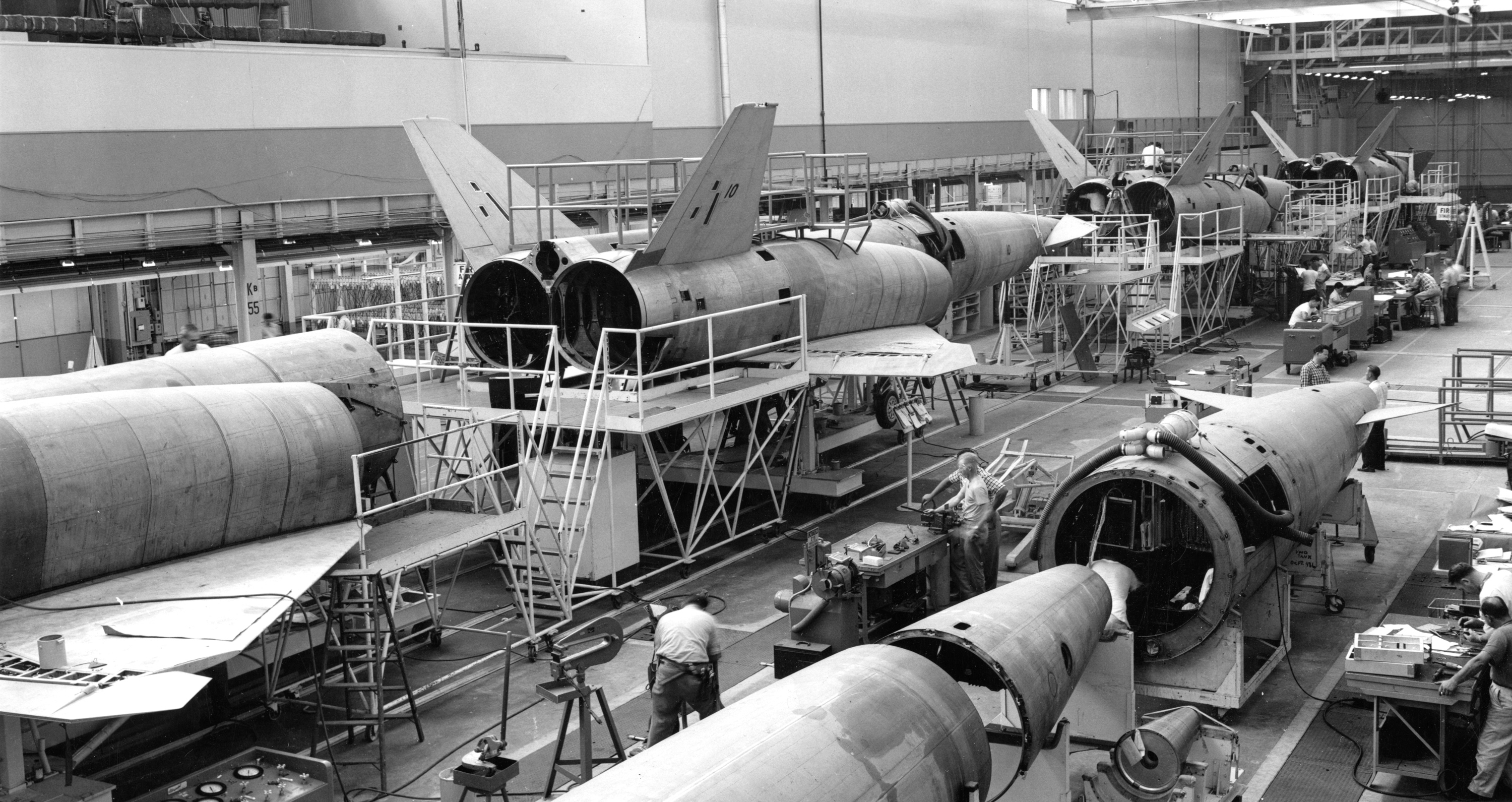 XRJ47-W-9 ramjets and propelled to speed by a rocket booster powered with a cluster of three XLR83-NA-1 engines.
XRJ47-W-9 ramjets and propelled to speed by a rocket booster powered with a cluster of three XLR83-NA-1 engines.
Pushing the limits of technology with this radically futuristic design put the entire Navaho program years behind schedule and vastly over budget. The original test program called for nine controlled flights of Navaho before attempting a mission profile flight of 1,500 miles ending with a dive-in to target. In February 1956, the Department of Defense (DOD) designated the Navaho program as a top priority and under Project ‘Broomstick’, required NAA to attempt the full mission scenario from the outset, with four missions to be flown between October 1956 and May 1957. The Air Force accepted the high-risk project and North American worked tirelessly to overcome all difficulties as they arose.
However, problems with the XN-6 auto navigation system, rocket booster and a host of other issues, pushed the first launch out for months. One problem of significance 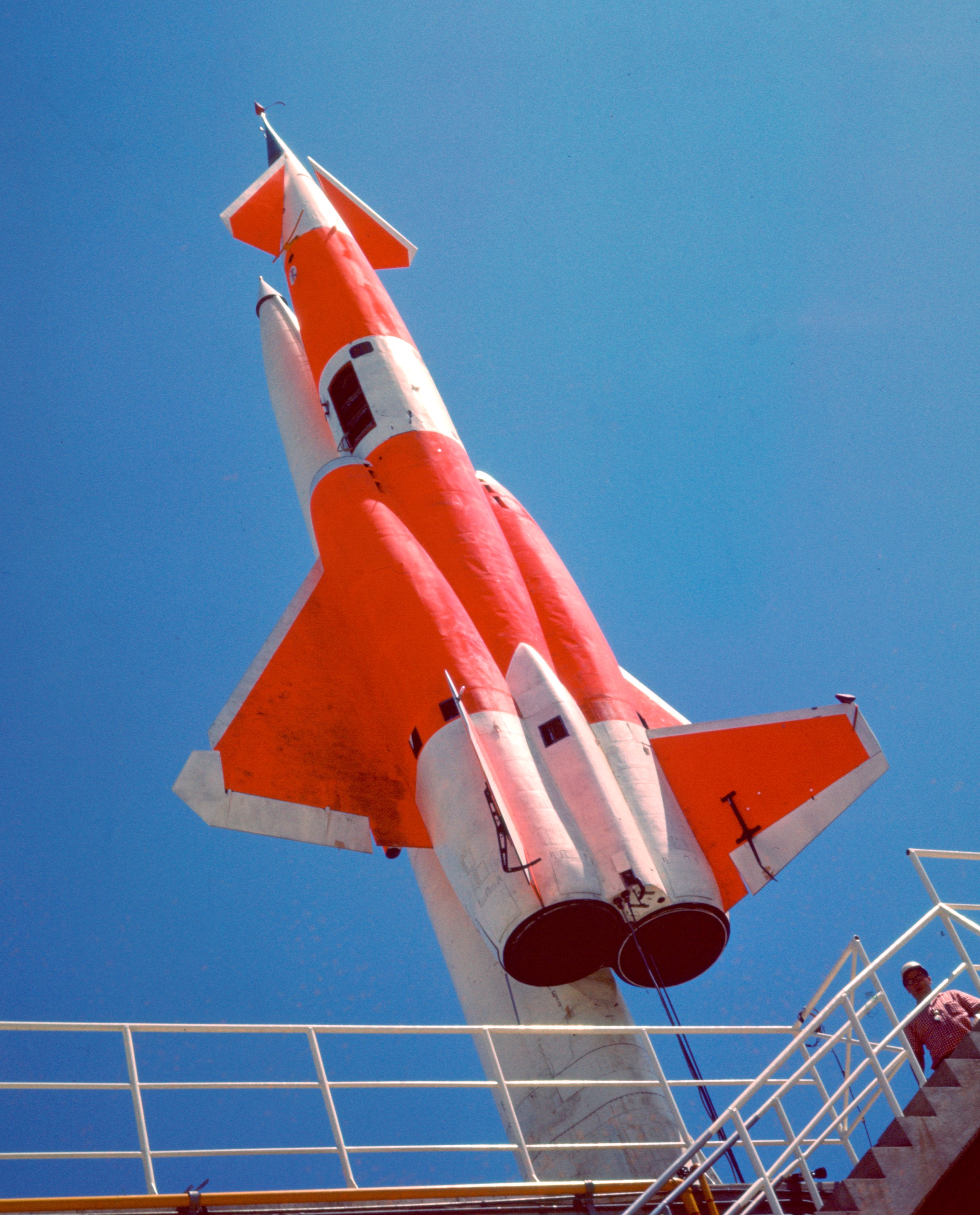 was a shortage of titanium alloy, specifically a weldable titanium alloy expected for use throughout the missile and booster to keep weight to a minimum. The problem became such an issue that NAA had to use stainless steel in place of titanium in many places on the test missiles and early production XSM-64A’s which significantly reduced their range.
was a shortage of titanium alloy, specifically a weldable titanium alloy expected for use throughout the missile and booster to keep weight to a minimum. The problem became such an issue that NAA had to use stainless steel in place of titanium in many places on the test missiles and early production XSM-64A’s which significantly reduced their range.
The Navaho N-6 autonavigator, an all-inertial guidance system, consisted of two NAA-designed NAVAN gyroscopes, accelerometers and a new transistorized digital computer, called NATAN. NAA began aircraft testing the XN-6 unit in early 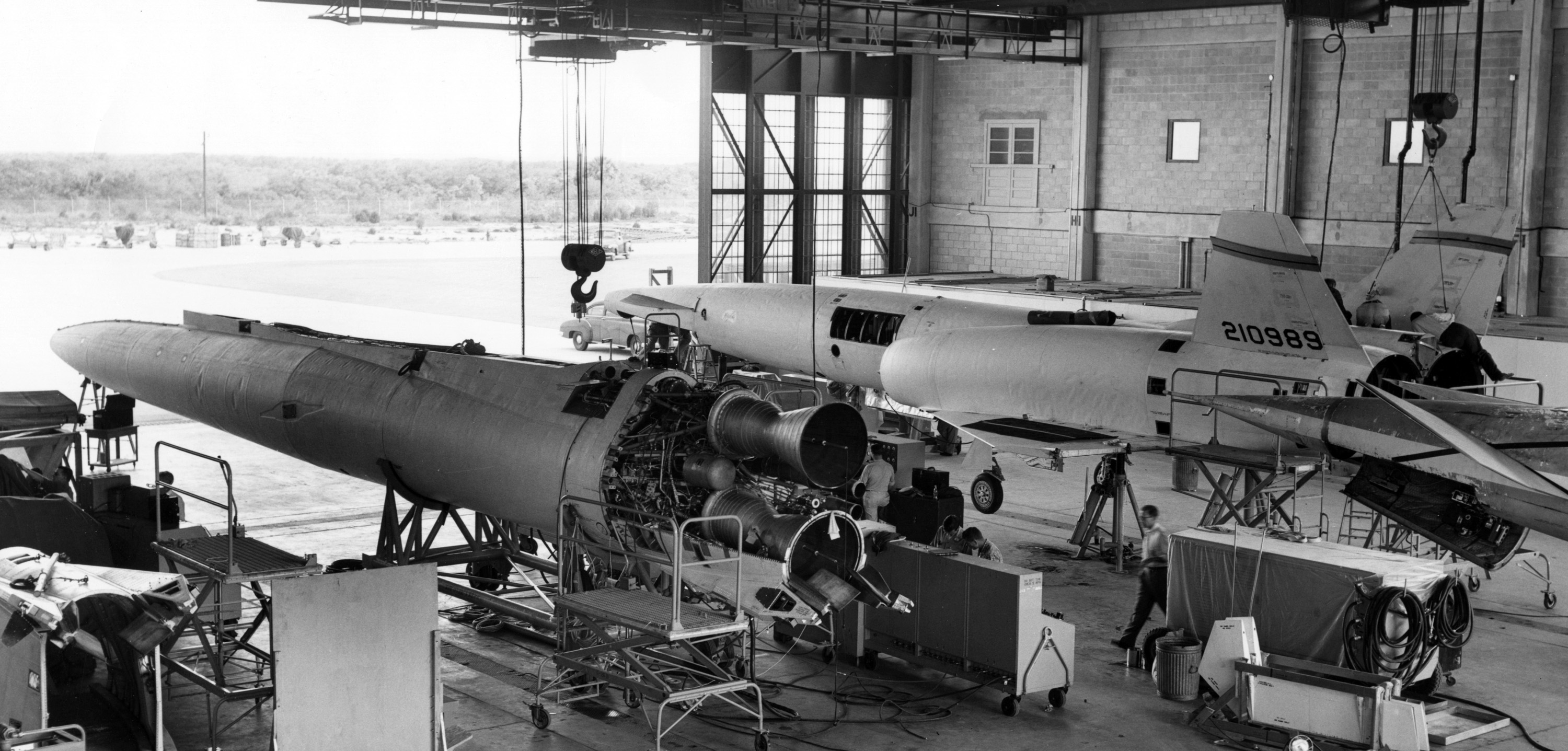 1955 aboard a Convair T-29 trainer and by October, the first XN-6 unit completed a total of sixty-four T-29 flights with nominal results. By the end of that year, NAA deemed the XN-6 units ready for testing in the X-10 vehicles, however, NAA performed a second series of tests with the second XN-6 unit aboard a C-131 for additional reassurance. With this complete, the new guidance system began testing in the X-10’s located at the Cape, eventually providing satisfactory results. NAA installed the follow-on units, the N-6A, in the XSM-64’s for testing. While the Air Force wanted the greatest accuracy, known as Circular Error of Probability (CEP), the requirements were eventually ‘relaxed’ to a 12,000 ft CEP after 5,000 miles of flight. A later version, the N-6B, a much-improved version over the N-6A destined for use in the operational XSM-64A Navaho III, never saw use in the program with the cancellation of Navaho. However, NAA offered the guidance platform for use in future vehicles.
1955 aboard a Convair T-29 trainer and by October, the first XN-6 unit completed a total of sixty-four T-29 flights with nominal results. By the end of that year, NAA deemed the XN-6 units ready for testing in the X-10 vehicles, however, NAA performed a second series of tests with the second XN-6 unit aboard a C-131 for additional reassurance. With this complete, the new guidance system began testing in the X-10’s located at the Cape, eventually providing satisfactory results. NAA installed the follow-on units, the N-6A, in the XSM-64’s for testing. While the Air Force wanted the greatest accuracy, known as Circular Error of Probability (CEP), the requirements were eventually ‘relaxed’ to a 12,000 ft CEP after 5,000 miles of flight. A later version, the N-6B, a much-improved version over the N-6A destined for use in the operational XSM-64A Navaho III, never saw use in the program with the cancellation of Navaho. However, NAA offered the guidance platform for use in future vehicles.
In late September 1956, Air Research and Development Command (ARDC) modified the flight test program once again. It’s leadership recommended that NAA complete one successful missile-booster combination flight before attempting the first ‘Broomstick’ flight. The first XSM-64 finally left the launch pad on November 6, 1956, but the 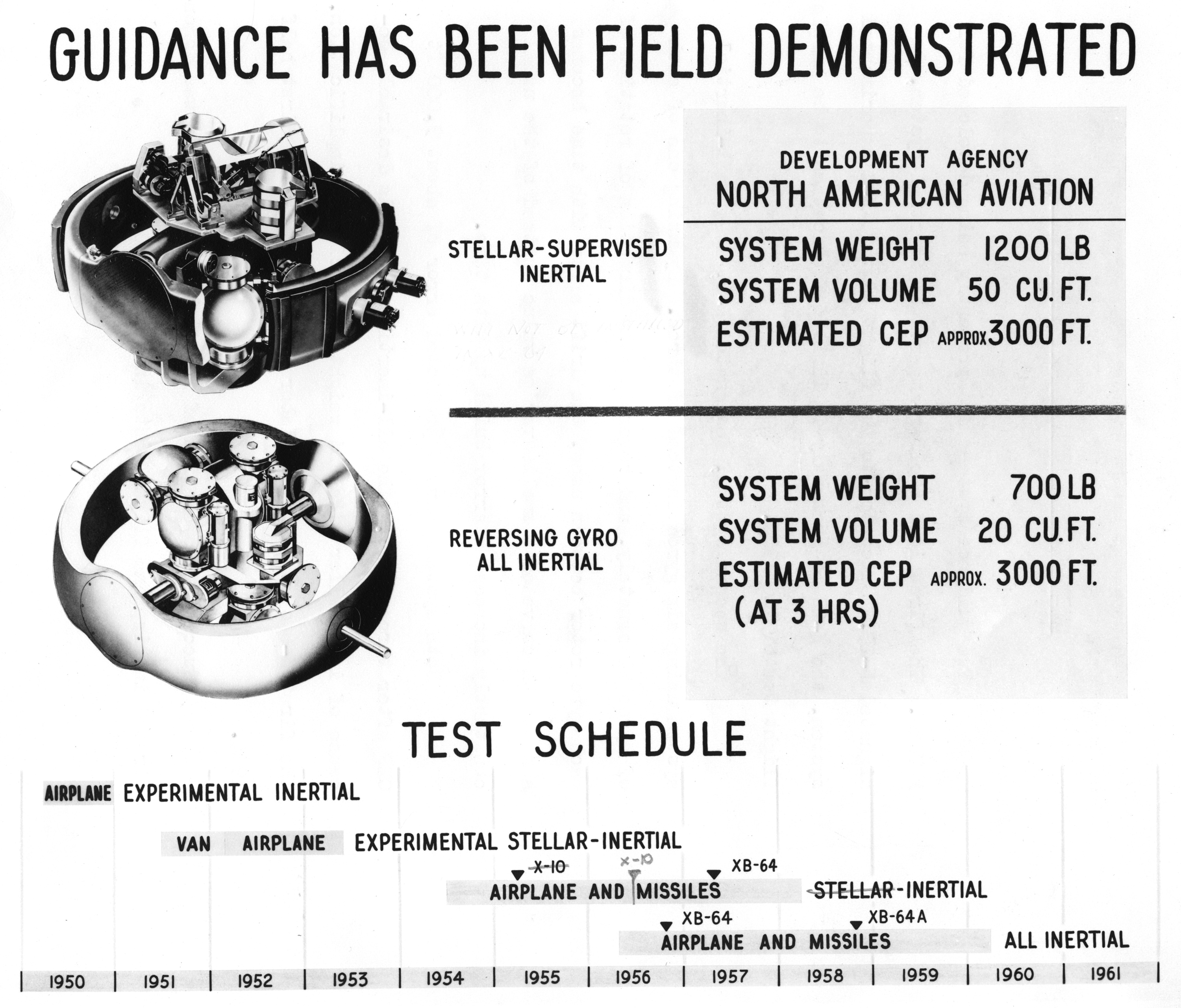 flight lasted only twenty-six seconds. It was determined that a pitch rate gyro had been installed backwards and the vehicle broke up at 10,000 feet. The second launch attempt would not occur until March 22, 1957, this time a faulty jettison system caused a loss of thrust in the booster. The missile separated at Mach 1.3 at 28,000 feet, well below
flight lasted only twenty-six seconds. It was determined that a pitch rate gyro had been installed backwards and the vehicle broke up at 10,000 feet. The second launch attempt would not occur until March 22, 1957, this time a faulty jettison system caused a loss of thrust in the booster. The missile separated at Mach 1.3 at 28,000 feet, well below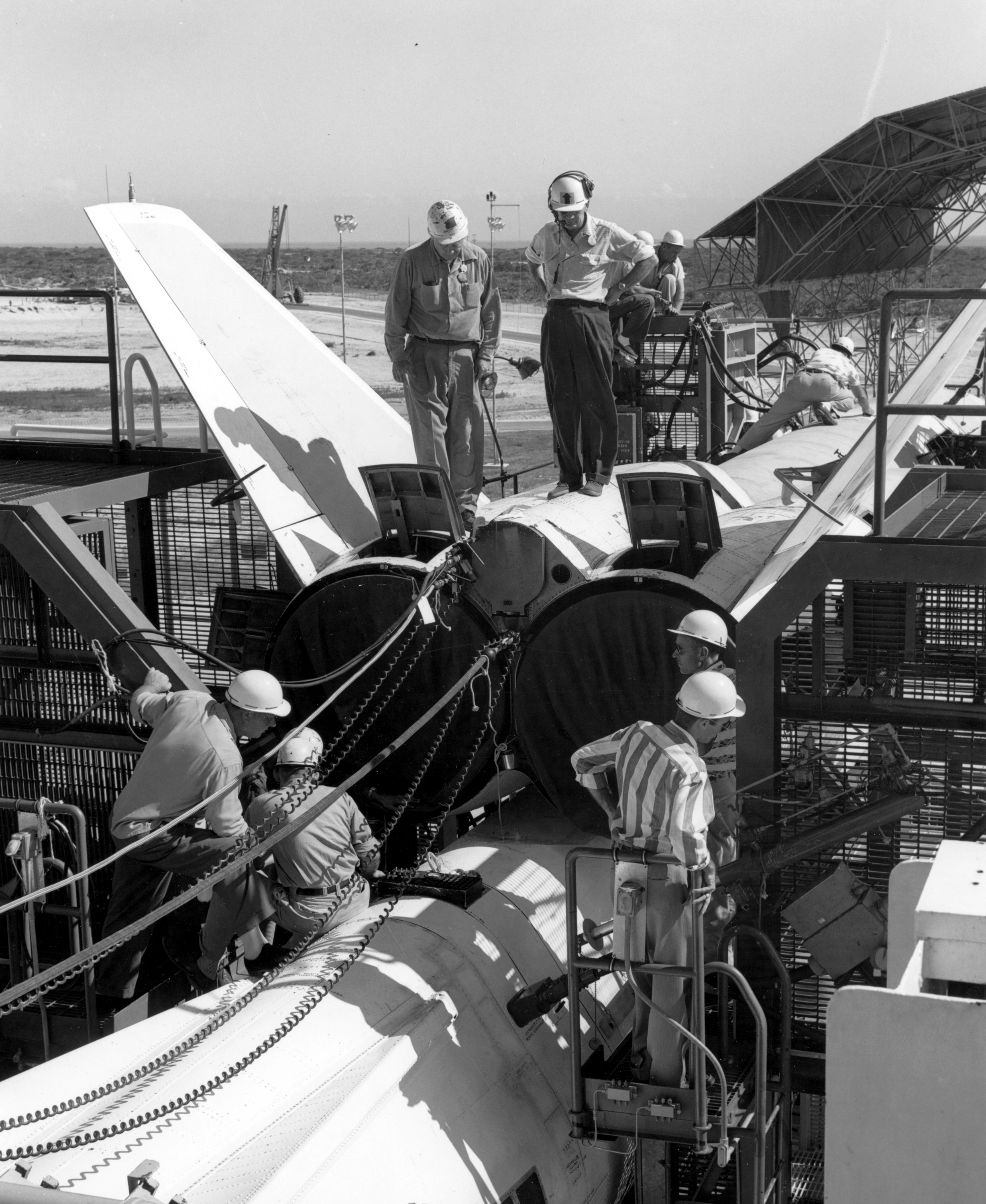 the speed needed for ramjet ignition, but the ground-based safety pilot took control and glided the XSM-64 over the Atlantic, testing the landing gear system before impacting the ocean.
the speed needed for ramjet ignition, but the ground-based safety pilot took control and glided the XSM-64 over the Atlantic, testing the landing gear system before impacting the ocean.
The third flight attempt, on April 25, 1957, lasted only a few seconds before the booster engines cut out, allowing the vehicle to fall back to the launch pad causing extensive damage and even more delays. Flight four on June 26th, saw the loss of an engine on the booster with the vehicle reaching only 12,000 feet before separating and gliding in for another ocean impact. Within a month of that failure, the Pentagon cancelled the Navaho program on July 10, 1957, with no money allocated for Navaho in the FY 1958 budget. Nevertheless, the Air Force sent a message two days later allowing the flight testing of five more vehicles to provide data in the areas of high temperature conditions, cruise data above Mach 2.75, inertial guidance system and ramjet propulsion. Under the ‘Fly Five’ program, the Air Force authorized five additional XSM-64 launches to the schedule at a cost of less than $5 million with one launch every seven weeks beginning on August 1st.
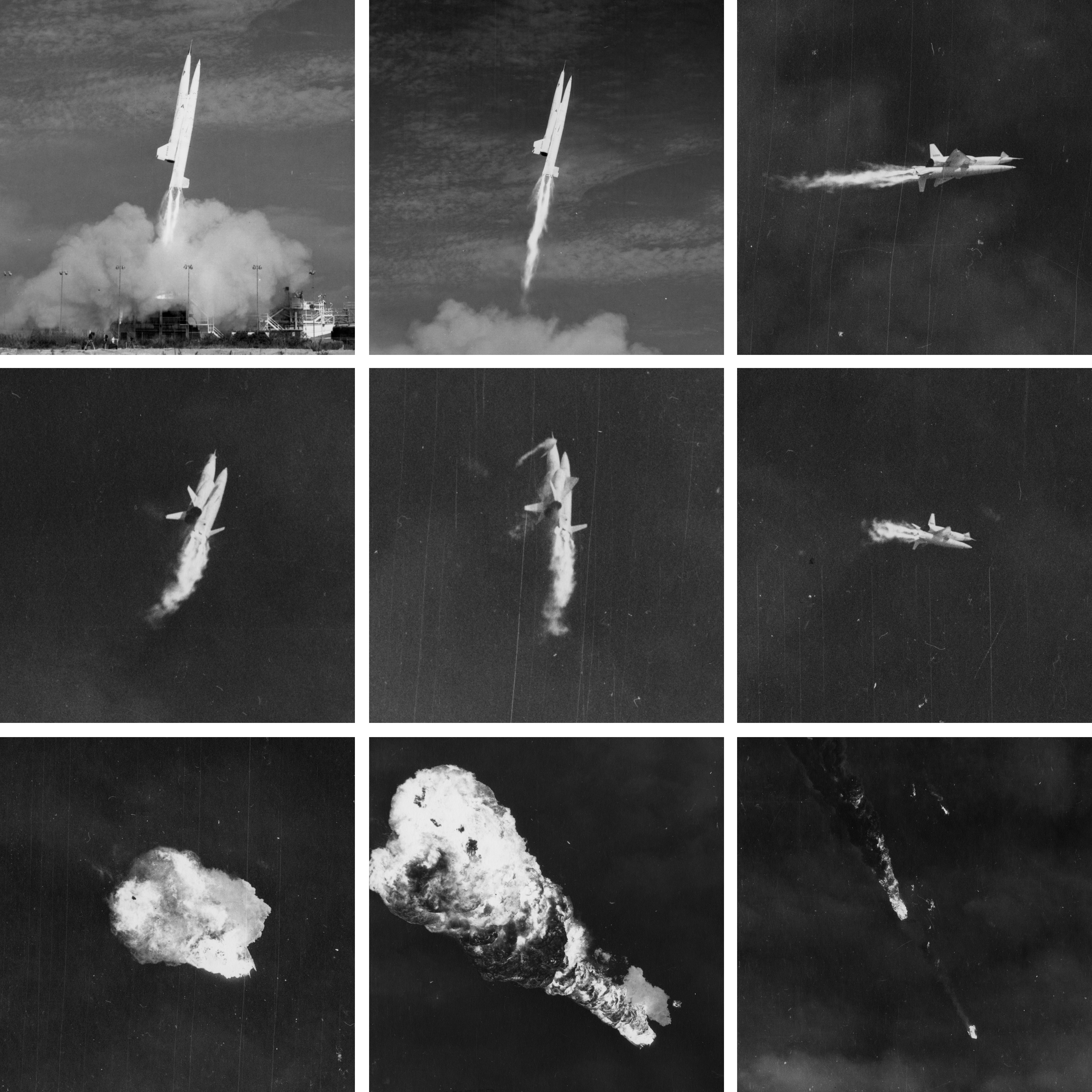 The first of the ‘Fly Five’ missions took place on August 12th with the boost, separation, ramjet ignition and initial cruise phase being successful for the first time. Their success short lived, as the autonavigator sent a right turn command five minutes into the cruise flight causing the left engine to quit, followed a minute later by the right engine. Still, the vehicle achieved a speed of Mach 3.08 and cruised between 70,000 and 80,000 feet with flight duration of nine minutes and twenty-six seconds covering a distance of 238 nautical miles. The next flight, on September 18th, had a similar flight profile, but as in the past, the autonavigator commanded another right turn sixteen minutes into the flight leading to engine shutdown.
The first of the ‘Fly Five’ missions took place on August 12th with the boost, separation, ramjet ignition and initial cruise phase being successful for the first time. Their success short lived, as the autonavigator sent a right turn command five minutes into the cruise flight causing the left engine to quit, followed a minute later by the right engine. Still, the vehicle achieved a speed of Mach 3.08 and cruised between 70,000 and 80,000 feet with flight duration of nine minutes and twenty-six seconds covering a distance of 238 nautical miles. The next flight, on September 18th, had a similar flight profile, but as in the past, the autonavigator commanded another right turn sixteen minutes into the flight leading to engine shutdown.
The third flight of ‘Fly Five’ and the seventh of the XSM-64 Navaho program came on November 13th, but a voltage regulator failed seventy-five seconds into the flight and the Range Safety Officer commanded its destruction. The following flight on January 10, 1958 proceeded well as the vehicle cruised near Mach 3 at 64,000 feet for approximately 850 miles at which point the autonavigator initiated a programmed turnaround for a flight back to the Cape. The autopilot made the turn too wide and ground control took over. In the ensuing sharp turn, the right engine flamed out and the aircraft crashed into the ocean. It had flown for forty-two minutes and twenty-four seconds covering 1,075 nautical miles. The final flight in this phase occurred on February 25th. Like the previous four, this mission ended in failure when the booster cut out fifteen seconds into the flight at an altitude of only 6,700 feet and a range of 2,300 yards.
Though the initial flight test program ended, under project RISE (Research Into Supersonic Environment), the Air Force proposed the idea of using the seven completed Navaho’s to support North American’s upcoming XB-70 bomber and F-108 long range interceptor programs. Three Navaho’s had already been delivered to the Cape for testing, while the remaining four remained in storage at NAA’s facility in Downey, California. However, after two unsuccessful attempts on September 11th and November 18, 1958, the Air Force terminated the project at the insistence of the B-70 Weapons System Project Office.
Though North American pitched several proposals to the DOD for the use of the remaining missiles and boosters, NAA eventually sold them as contaminated scrap in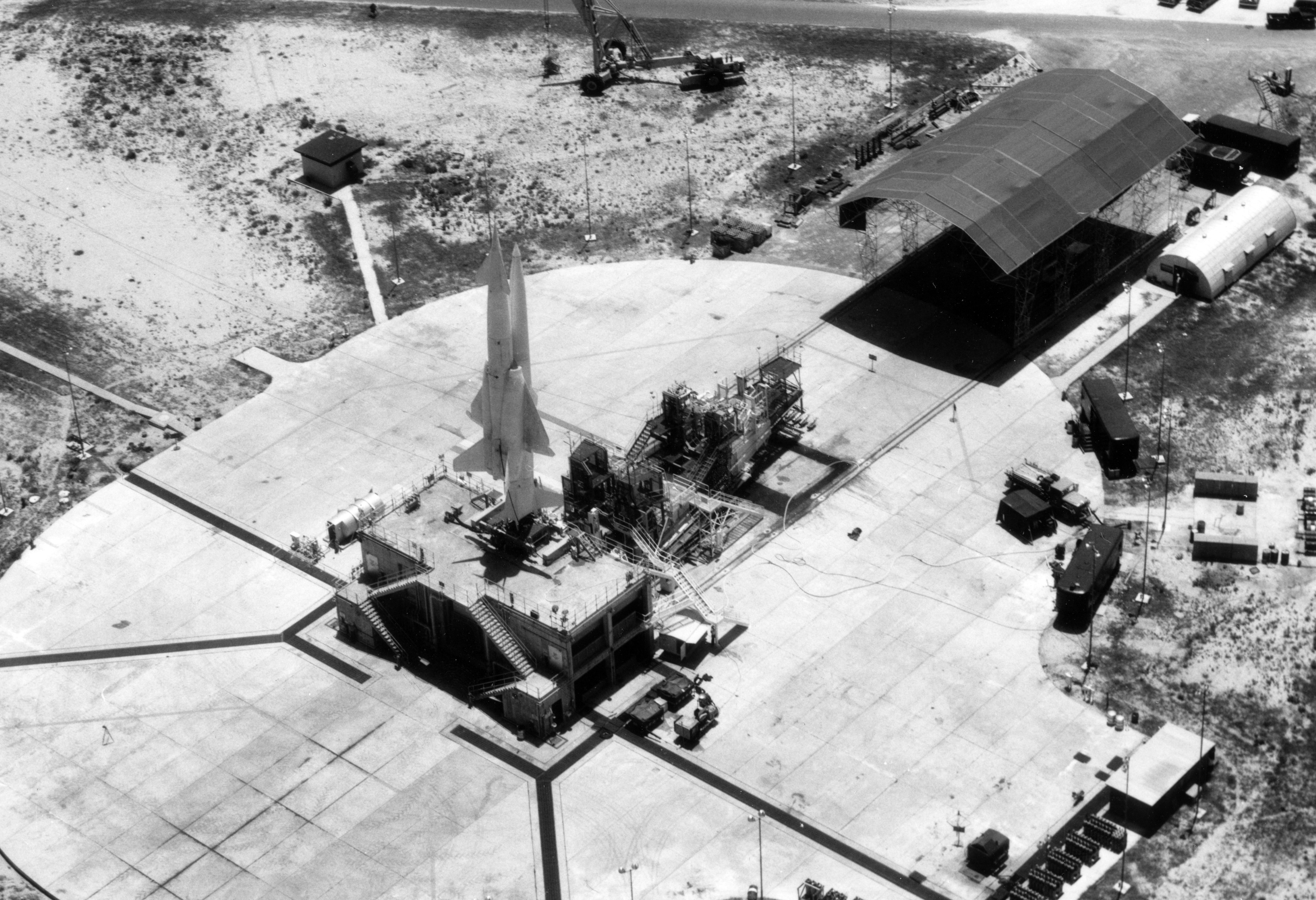 1961. Little remains of the Navaho missile program, a handful of booster engines in museums and a sole rocket booster displayed in front of VFW post 10208 in Fort McCoy, Florida. The sole remaining XSM-64, which had remained at Cape Canaveral Air Force Station, was donated to the station for use as an outdoor display. This Navaho took heavy damage by Hurricane Matthew on October 7, 2016 and the remains are currently stored and awaiting restoration.
1961. Little remains of the Navaho missile program, a handful of booster engines in museums and a sole rocket booster displayed in front of VFW post 10208 in Fort McCoy, Florida. The sole remaining XSM-64, which had remained at Cape Canaveral Air Force Station, was donated to the station for use as an outdoor display. This Navaho took heavy damage by Hurricane Matthew on October 7, 2016 and the remains are currently stored and awaiting restoration.
While North American engineers failed to overcome the technological challenges associated with the Navaho missile, they had total success uncovering advancements in metallurgy, creating advanced inertial guidance systems, pioneering ramjet propulsion, and designing canard-configured vehicle, technologies that would be used in other programs including the XB-70, X-15 and the successful AGM-28 Hound Dog cruise missile. To push the envelope you must test, you must have failure or you will not advance.
For further reading, see:
ARDC Historical Branch, "Development of the SM-64 Navaho Missile; 1954 to 1958”, AFMC History Office, January 1961
Miller, Jay, “The X-Planes : X-1 to X-45” Midland Publishing, 2001